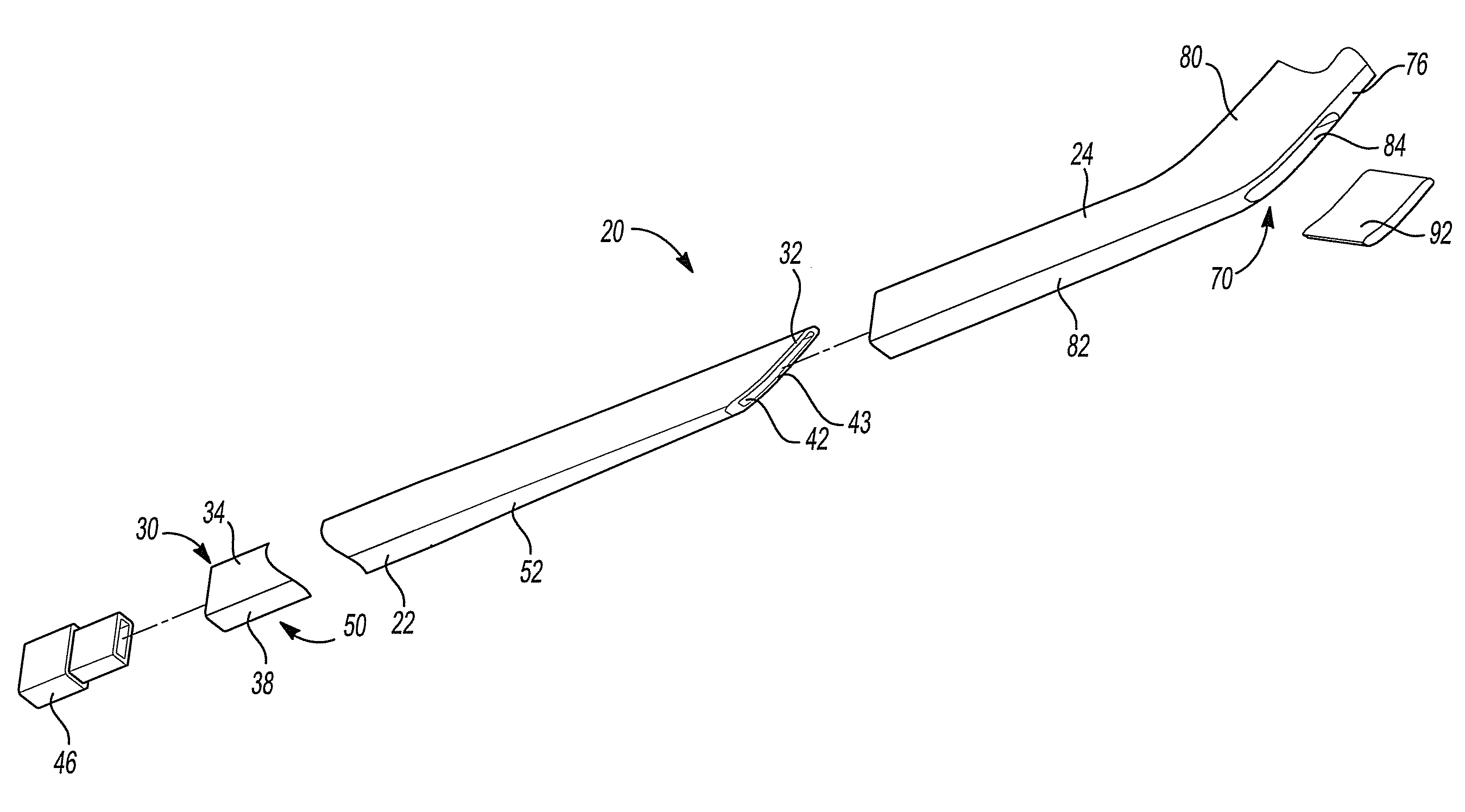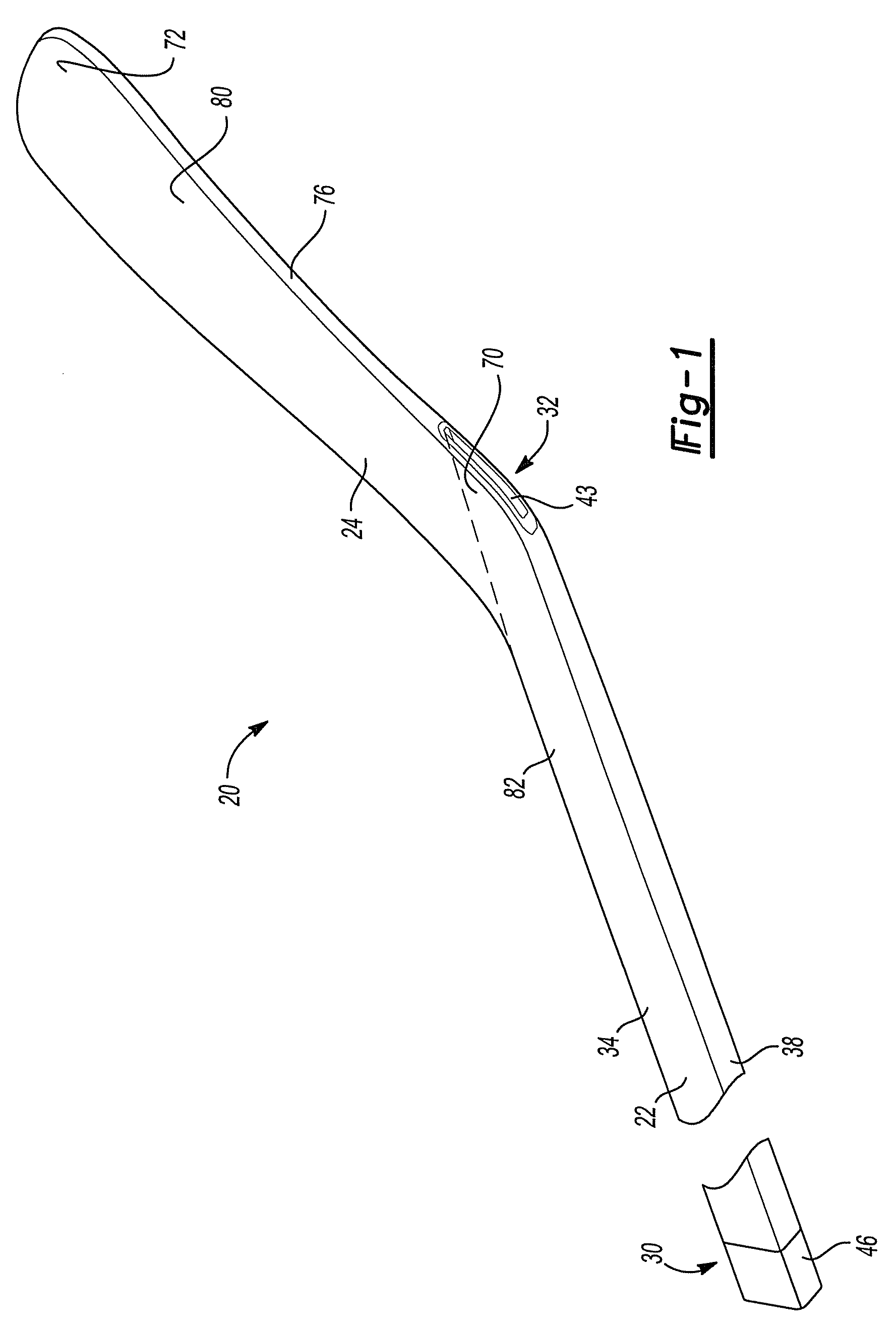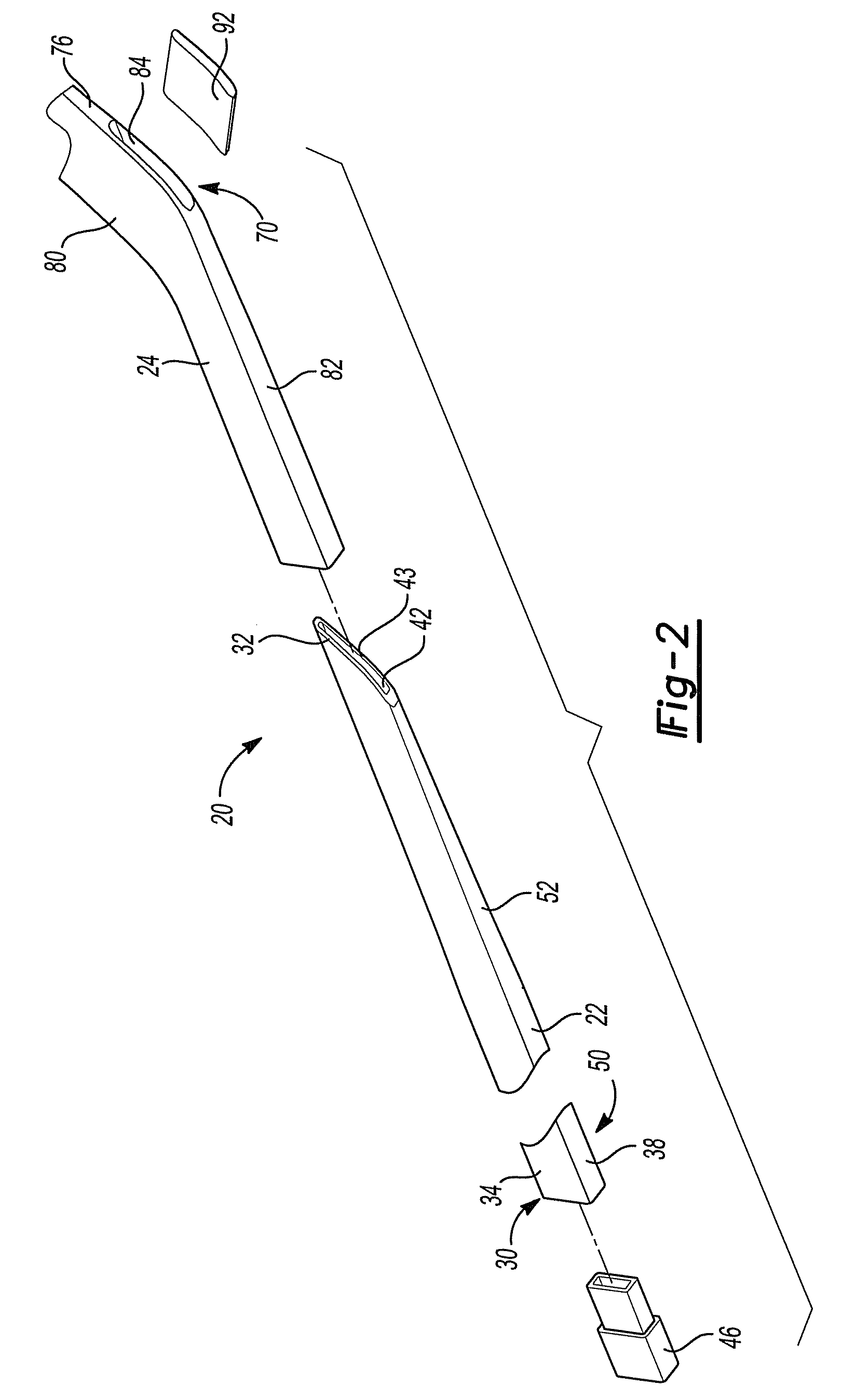Hockey stick
a hockey stick and composite technology, applied in the field of composite hockey sticks, can solve the problems of adversely affecting the play of the stick, inconsistent flexing characteristics of the joint, adversely affecting the flex and mechanical integrity of the hockey stick, etc., and achieve the effect of improving the playing characteristics
- Summary
- Abstract
- Description
- Claims
- Application Information
AI Technical Summary
Benefits of technology
Problems solved by technology
Method used
Image
Examples
Embodiment Construction
[0020]The following description is merely exemplary in nature and is not intended to limit the present teaching, application, or uses.
[0021]Referring to FIGS. 1-5, a one-piece composite hockey stick 20 according to the present teachings is shown. Hockey stick 20 includes a shaft 22 coupled to a blade 24. Shaft 22 and blade 24 are fixed together to form a one-piece hockey stick. As used herein, the term “one-piece” hockey stick means that the blade and shaft are permanently coupled together and are not intended to be separated one from another after construction regardless of the manufacturing process used to achieve such construction.
[0022]Shaft 22 includes a grip end 30 and a blade end 32. Shaft 22 is generally rectangular in cross-section and includes a first pair of parallel sides 34, 36 and a second pair of parallel sides 38, 40 that are generally perpendicular to the first pair of parallel sides 34, 36. First pair of parallel sides 34, 36 may be wider than second pair of parall...
PUM
 Login to View More
Login to View More Abstract
Description
Claims
Application Information
 Login to View More
Login to View More - R&D
- Intellectual Property
- Life Sciences
- Materials
- Tech Scout
- Unparalleled Data Quality
- Higher Quality Content
- 60% Fewer Hallucinations
Browse by: Latest US Patents, China's latest patents, Technical Efficacy Thesaurus, Application Domain, Technology Topic, Popular Technical Reports.
© 2025 PatSnap. All rights reserved.Legal|Privacy policy|Modern Slavery Act Transparency Statement|Sitemap|About US| Contact US: help@patsnap.com



